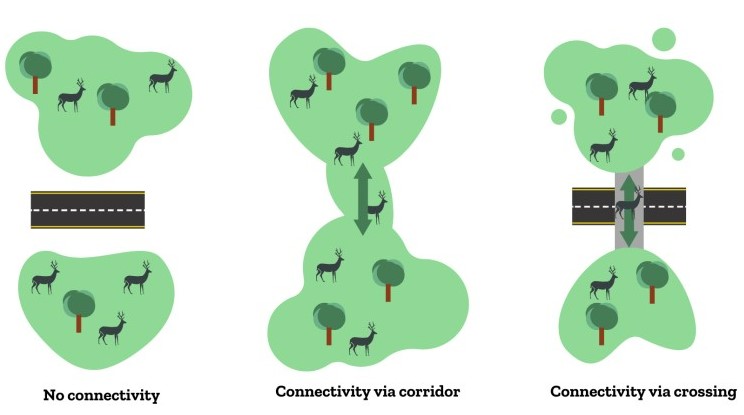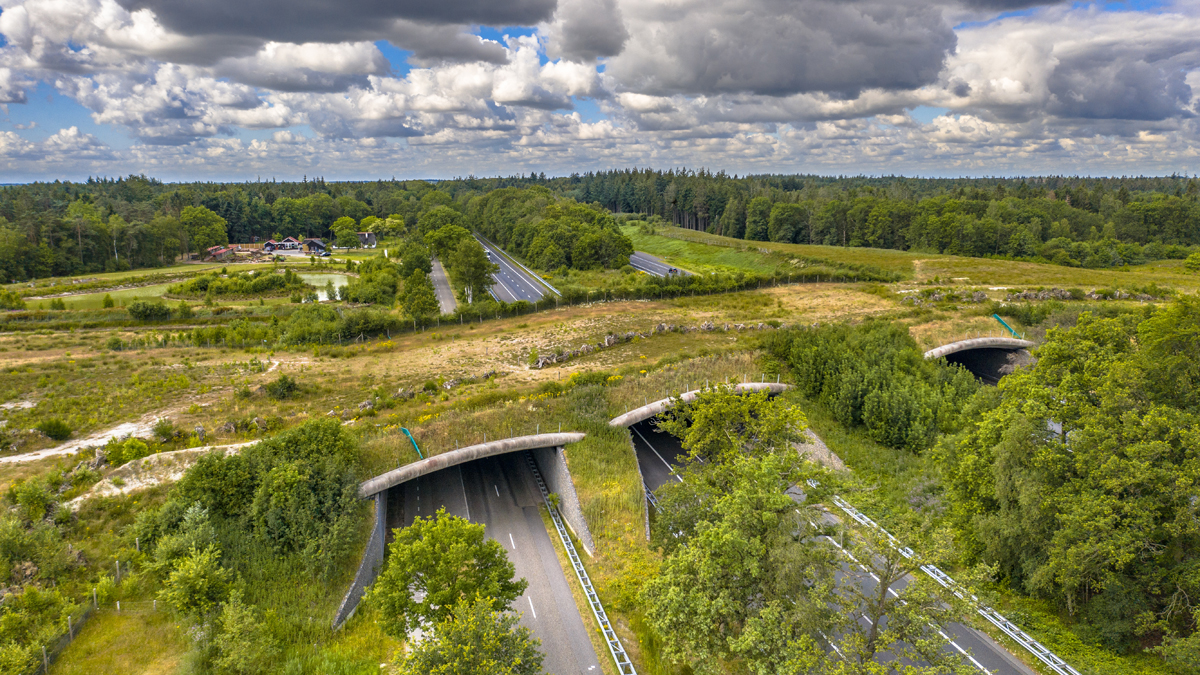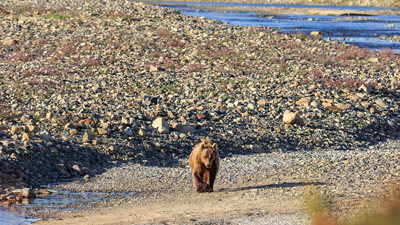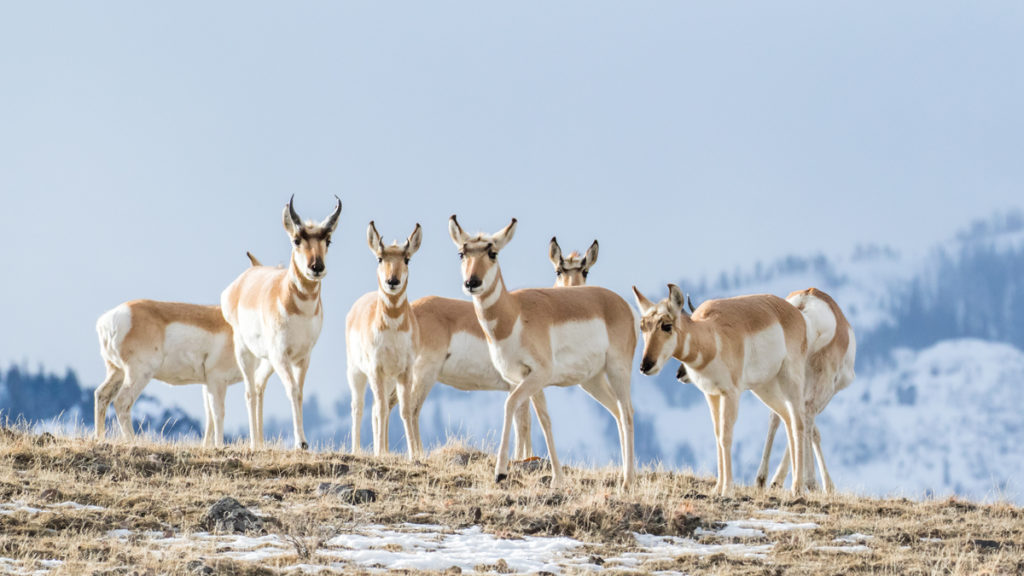While people throughout the United States—and across the globe—have emerged from a major pandemic, we continue to face another grave threat: climate change. One only needs to pick up a newspaper or turn on the television to learn of the most recent natural disaster to devastate a community, from forest fires and extreme drought to hurricanes and floods. Changes in weather, temperatures, and precipitation are simultaneously impacting how we live and how we plan for the future.
As we look to better prepare for the future and work to adapt to the impacts of climate change, the smartest recovery and resilience plans will include measures to conserve habitat connectivity. By embracing innovative and proven efforts to maintain, enhance, and restore wildlife corridors, we can rebuild communities in a way that improves our public and environmental health.
What are wildlife corridors and why are they important?
Wildlife corridors facilitate the movement of animals across the landscape to reach food, water, and mates, as well as to respond to seasonal weather patterns and a changing climate. As the world warms, species will need to shift their ranges across the landscape—often higher in elevation or latitude—to track suitable climate conditions. If wildlife populations are left with only isolated patches of habitat set aside in protected areas, they are unlikely to survive in the long term.
When habitats are fragmented by roads, fences, dams, or other human development and activities, these natural migration and travel routes are severed, preventing wildlife from accessing essential resources. This threatens the very survival of individual animals and entire species. Indeed, a United Nations report released in 2019 warns that habitat fragmentation is a leading cause of the current extinction crisis.

Connecting (or reconnecting) these patches of habitat entails identifying and conserving the areas of the landscape through which wildlife move (corridors), and then identifying and mitigating the movement barriers, such as roads or fences. Given that wildlife corridors pass through rural and urban areas—and private and public lands—facilitating wildlife migration usually requires collaboration among multiple individuals, agencies, and lawmakers across jurisdictions.
Habitat connectivity and climate resilience
Habitat connectivity doesn’t just benefit wildlife; it benefits entire ecosystems and human communities as well. Wildlife corridors provide valuable ecosystem services—the benefits people obtain from ecosystems—and help us improve our resilience to climate change.

Riparian corridors, for instance, are often super-highways for wildlife. But they also benefit communities by minimizing the impacts of floods and improving water quality. Introducing beavers, or mimicking the role of beavers by building beaver-like dams, is an increasingly popular way to increase floodplain connectivity and climate resilience; water stored behind beaver dams is released more slowly, buffering the effects of drought and providing a steady flow of water throughout the growing season.
Additionally, corridors of natural vegetation capture carbon from the atmosphere and provide shade and leafy cover that buffers extreme temperatures. The cooling effects of upland forest or riparian corridors are particularly important in developed and urban areas, where they also provide recreational benefits and help connect people to nature. In agricultural landscapes, patches of natural vegetation that facilitate species movement also benefit people by reducing erosion from extreme weather events, increasing seed dispersal, and providing habitat for pollinators essential for crop production.
A primary reason the government of Florida is working to protect the Florida Wildlife Corridor—which extends from the Everglades 1,000 miles north to the border with Georgia—is to provide water supply, storm protection, healthy soils, and clean air for people and wildlife. The corridor also reconnects critical habitat for Florida panthers, Florida black bear, and other species that make up the state’s rich natural heritage.
The recent wave of natural disasters devastating towns and cities across the nation has made painfully clear that we must work to build more climate resilient communities. Wildlife corridors and healthy landscapes are integral parts of that equation. Indeed, conservation biologists agree that one of the most effective strategies for protecting biodiversity in the face of a changing climate is to ensure wildlife habitats are connected on a landscape scale. Recent and future increases in extreme temperatures, drought, flooding, and fires—combined with changing land use—is threatening wildlife populations.

The science on the connection between climate change and wildlife corridors in particular is compelling, and the U.S. Congress is taking notice. In June of 2020, the House Select Committee on the Climate Crisis called on lawmakers to protect wildlife corridors. The Committee’s “Congressional Action Plan” urged federal agencies “to establish and maintain a national wildlife corridor and connectivity system, including highway and road crossings, on federal lands and waters” and “consult with tribes to enhance habitat connectivity on tribal lands.”
On January 27, 2021, President Biden signed an executive order recognizing the urgent need to build resilience against the impacts of climate change. The order broadly addresses the climate crisis at home and abroad with an ambitious and comprehensive plan that emphasizes the importance of protecting lands, waters, and biodiversity. The US Department of the Interior is working to tackle the climate crisis and guide the nation’s actions to prepare for and adapt to climate change in the coming years.
Restoring habitat connectivity presents an opportunity to rebuild communities hard hit by recent natural disasters, enjoy improved environmental health, and prepare for a more resilient future in the face of climate change.



